Preparing the Soil – Update
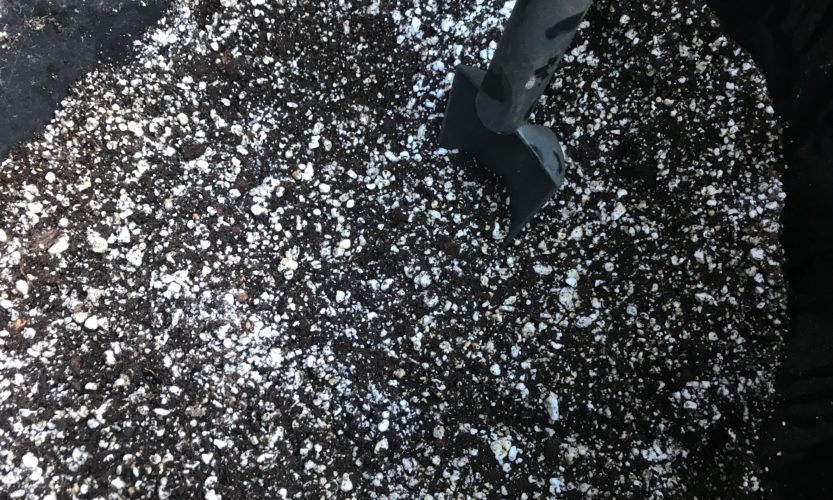
Last season I wrote a post explaining how we go about preparing the soil for planting which you can find here. Well…. this is a new season, with “more water under the bridge” – and new knowledge gained through experience, the advice of experts and our own research and reflections. Therefore I want to update last year’s post with what new ways we are preparing “soil” – or better said “growing media” – to start and grow our veggies. Don’t get me wrong – most of what I said last year still stands. Where we’ve significantly changed a practice that I touted back then, I will indicate it here and in that post as well.
Fall Gardening – Action!
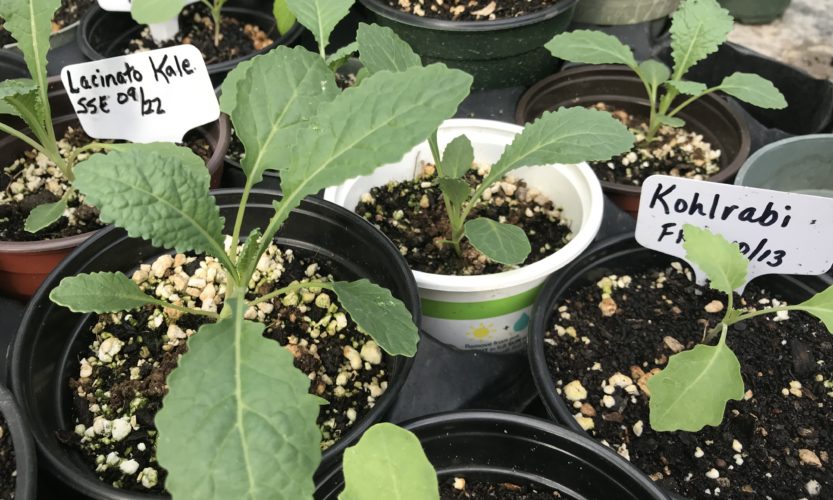
It’s early November here in South Florida, prime time for planting our organic garden for the new season. We have just gotten a real break in the weather, with some cooler mornings last week (not quite cool enough for us South Floridians to get our boots and scarves out, though it’s tempting, right?) This cooling does make us enthused about being outside and getting our garden going! So, to give a rundown on how we’ve started with either seedlings or direct plantings, here goes:
Summer Cover Crops
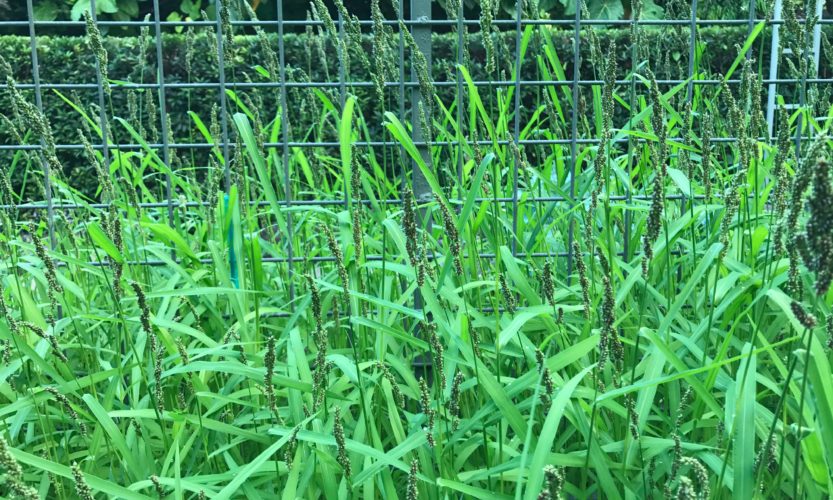
Cover crops are any of a wide variety of plants which are planted in the off-season in order to enrich the soil for the coming new growing season. There are many functions that cover crops perform:
Oh, Okra!
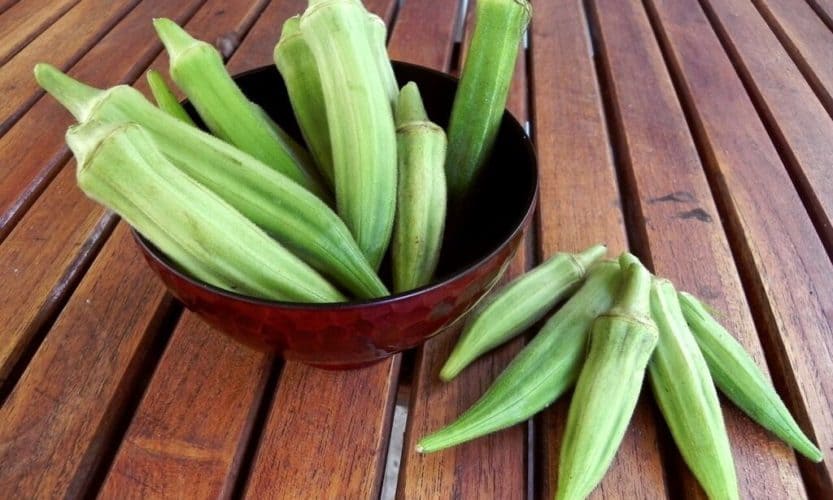
I was quite fortunate as a kid to have my grandfather living behind us on his own large piece of property here in South Florida. Papa was a sharecropper for much of his life (in Georgia), and so having a garden was something he just did, naturally, every season, into his 90’s. He loved growing okra, which he called “okry,” and always had quite a substantial crop. My Mom would make an okra stew – which I don’t think I ever ate as a child, but it is one of my favorite ways to eat it now. (See recipe links below). I brought it to a family potluck dinner where my siblings (as adults) told me they were all dreading an okra dish and guess what? They loved it!
We tried growing a few fancy types one season (such as “star of David” which is very cool looking), but honestly, we just seemed to have settled into a few basic types – the Clemson spineless, and a basic red okra, and this year we’re trying one called “Chant” & will report how it turns out (Update: it’s great, good producer and fine okra). The fruit of the plant grows quickly, so it must be picked daily or you will get overgrown, tough pieces. The most serious farmers will even pick twice daily to get the perfect size!
Okra absolutely loves South Florida in the summer! And it has very few issues. This year we are getting some snail action on the plants, but they seem to have abated after applying Sluggo Snail Bait. We typically plant rows by direct seed in late April and into June, and can harvest up through October as they just love the heat. I hope if you’ve been an okra skeptic all your life, you’ll give it a try – non-slimy recipes to follow!
Written by DK; Photo by Tracy Elliott
Hearty Kale, Butternut Squash, and Chorizo Soup
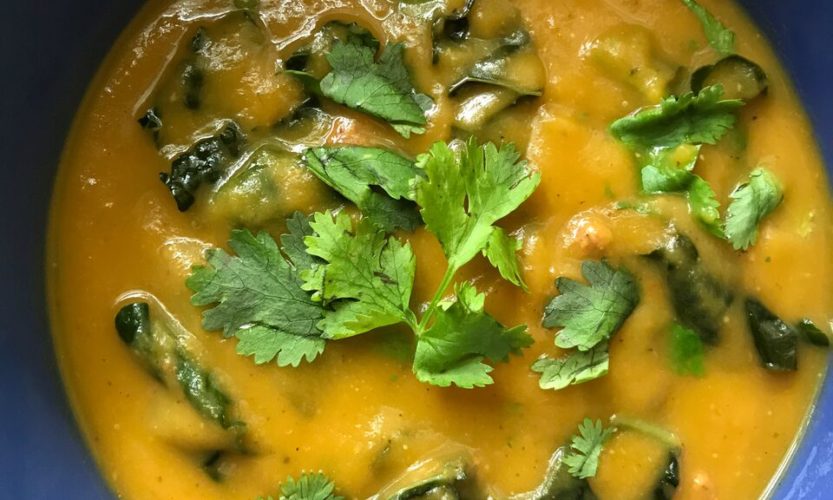
I didn’t have quite enough squash and wasn’t sure how it would combine with sweet potato; it actually added extra thickness and a depth of flavor, so this combo is a definite keeper (of course you can just use squash). I also used both lacinato (aka dinosaur or black kale) and curly kale as that’s what was on hand and it worked very well. Before I add kale to a recipe, I steam or parboil it first for a few minutes to remove its bitterness – then it has a neutral to sweet flavor.
We are very lucky to have an artisan pork shop near us, where I can get the best chorizo around – uncooked, and so tasty! The heat in it is pretty mild, so I realized the next time around I would add some red pepper flakes or a medium-heat pepper to the mix. Also, despite what many recipes say, I never add chorizo at the beginning of a dish where it is going to be boiled for a while – I’ve done this in the past and it leaves the chorizo dry and flavorless. So as you’ll see in the directions I add a tiny bit at the start, then brown the chorizo separately and add it near the end (with its wonderful oily rendered liquid) for maximum flavor and texture.
I wanted to make this a creamy soup yet still have the contrast in color between the starches and the kale, and to retain the nice bits of meat from the chorizo to bite into. So I decided to blend the squash/potato/onion mixture first, and then add the kale and chorizo. This turned out to be such a rich and creamy soup packed with nutrition and flavor – resulting in a unanimous and enthusiastic seal of approval from my family!
Adapted from Lindaraxa.
Writing and Photo by DK
